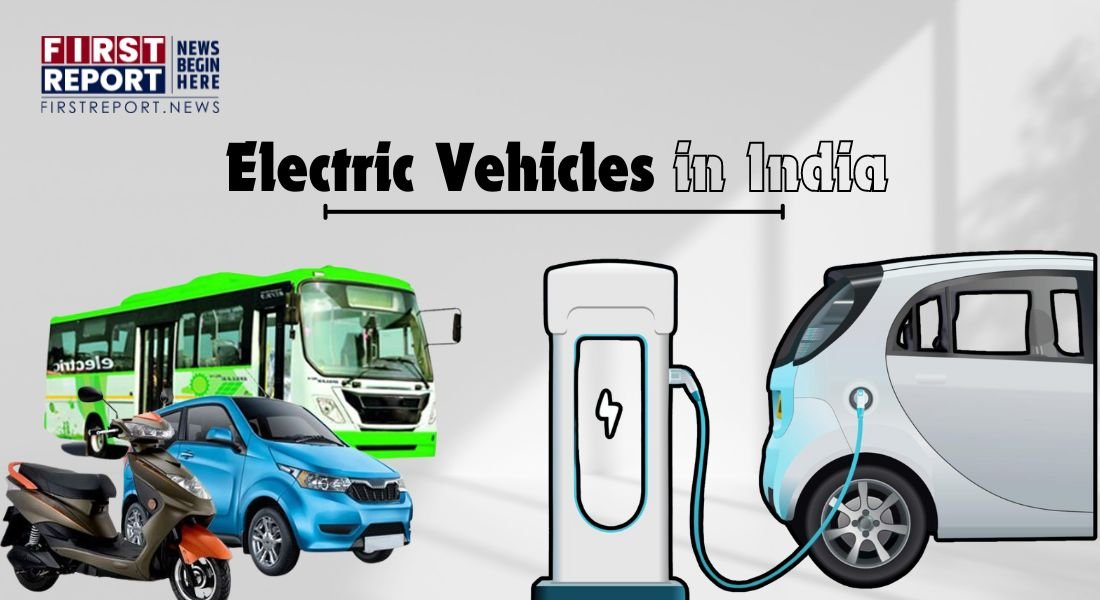India, a country with more than 1.4 billion people, is seeing a big increase in the need for transportation. With more people moving to cities, the demand for better and greener ways to travel is higher than ever. The many roads in India are getting more crowded with cars that use gasoline, causing traffic jams, pollution, and a reliance on fossil fuels. To fix these problems, India is starting to use more electric vehicles (EVs), aiming to change how people travel and deal with the important issues of today.
- The electric vehicle (EV) market was worth $8.03 billion in 2023 and is expected to grow to $34.8 billion by 2024.
- It is predicted to reach $120 billion, with an average yearly growth rate of 22.92% from 2024 to 2030.
- Ola Electric has a 19.07% share of the market.
- TVS Motor holds an 11.89% share.
- Battery Electric Vehicles (BEVs) make up 98.38% of the market.
- Two-wheelers represent about 56% of EV sales.
- The goal is to lower carbon emissions, helping India achieve its net-zero target by 2070.
India’s goals include:
- 30% of private cars are electric
- 70% of commercial vehicles are electric
- 40% of buses are electric
- 80% of two-wheelers and three-wheelers being electric
This could lead to around 80 million EVs on the road by 2030, showing strong growth potential.
Also Read: How to Fight Phone Addiction
What are Electric Vehicles (EVs)?
Electric vehicles (EVs) are vehicles that run mainly or completely on electricity, not on gasoline or diesel. They use an electric motor to move, which gets its energy from a battery that can be recharged.
Types of electric vehicles:
- Battery electric vehicles (BEVs)
- Plug-in hybrid electric vehicles (PHEVs)
- Hybrid electric vehicles (HEVs)
Also Read: Online Vs Offline Shopping
Importance of Electric Vehicles in India
| Importance | Benefits |
| Environmental Impact | Reduces carbon emissions, air pollution, and noise pollution |
| Energy Security | Reduces dependence on fossil fuels, promoting energy independence |
| Economic Benefits | Jobs in manufacturing, charging infrastructure, and related industries |
| Technological Advancement | Encourages new ideas and research in electric car technology |
| Public Health | Enhances air cleanliness, lowering breathing problems and boosting overall health |
| Reduced Fuel Costs | Costs less to run than regular cars |
| Urban Mobility | Lessens traffic jams and enhances city transportation |
| Infrastructure Development | Promotes the growth of charging stations and smart energy systems |
| Global Competitiveness | Makes India a top player in the global electric car market |
| Policy Alignment | Helps the government achieve its goals for sustainable growth and climate protection |
Also Read: Creativity vs Knowledge – Which Is Better?
Government Initiatives and Policies
- National Electric Mobility Mission Plan (NEMMP)
- FAME India scheme
- State-level incentives and policies
Pros of Electric Vehicles in India
- Environmental
- Economic
- Performance
- Social
Also Read: Peer Pressure— Pros and Cons
Environmental Benefits
| Benefit | Details |
| Reduced emissions | EVs produce zero tailpipe emissions, contributing to cleaner air quality. |
| Reduced noise pollution | EVs are significantly quieter than conventional vehicles, improving the overall environment. |
| Reduced dependence on fossil fuels | India can reduce its reliance on imported fossil fuels, improving energy security |
Also Read: Pros and Cons of E-Commerce for Businesses
Economic Benefits of Electric Vehicles in India
| Benefit | Details |
| Lower operating costs | lower maintenance, no oil changes, and cheaper electricity. |
| Increased job creation | create jobs in manufacturing, charging infrastructure, and battery technology. |
| Reduced fuel imports | reduce dependence on imported fossil fuels, save foreign exchange, and improve trade balance. |
| Economic growth | boost economic growth, and create new opportunities for Indian businesses. |
Also Read: Reservation System in India 2024
Performance Benefits of Electric Vehicles
| Benefit | Details |
| Instant torque | maximum torque, smooth and powerful driving. |
| Quick acceleration | accelerate faster than conventional vehicles, especially at low speeds. |
| Regenerative braking | convert kinetic energy into electricity, extend driving range, and reduce brake wear. |
| Quiet operation | minimal noise pollution, comfortable driving, and reduced noise-related health issues. |
| Higher efficiency | more efficient than internal combustion engines, convert a higher percentage of energy into motion. |
Also Read: Positive and Negative Impacts of Technology
Social Benefits of Electric Vehicles
| Benefit | Details |
| Improved air quality | EVs reduce air pollution, leading to better health outcomes, especially for people with respiratory issues. |
| Reduced noise pollution | EVs contribute to a quieter environment, improving quality of life and reducing stress. |
| Increased energy independence | By reducing reliance on fossil fuels, EVs can help India achieve greater energy independence. |
| Economic empowerment | The development of the EV industry can create new job opportunities and promote economic growth in rural areas. |
| Environmental justice | EVs can help address environmental disparities and promote social equity. |
Also Read: Moonlighting in India: Pros and Cons
Challenges with Electric Vehicles in India
- Electric cars cost more to buy than regular cars that use gasoline.
- There aren’t enough places to charge electric cars, especially in the countryside.
- Some people are afraid that electric cars won’t go far enough or that they won’t find a place to charge.
- It takes a long time to fully charge an electric car.
- Many people don’t know about the good things electric cars can do or the help they can get to buy one.
Also Read: Buy Now Pay Later – Pros and Cons
Opportunities of Electric Vehicles in India
- Growing awareness of environmental benefits
- Government incentives and subsidies
- Increasing charging infrastructure
- Improving battery technology
- Cost parity with traditional vehicles
Also Read: Cashless Economy – Pros and Cons
Top 10: Electric Vehicle Companies
- BYD
- Tesla
- Volkswagen
- GEELY
- General Motors
- Mercedes-Benz
- BMW Group
- Stellantis
- Hyundai Motor Group
- Renault
Also Read: Cybercrime in India




